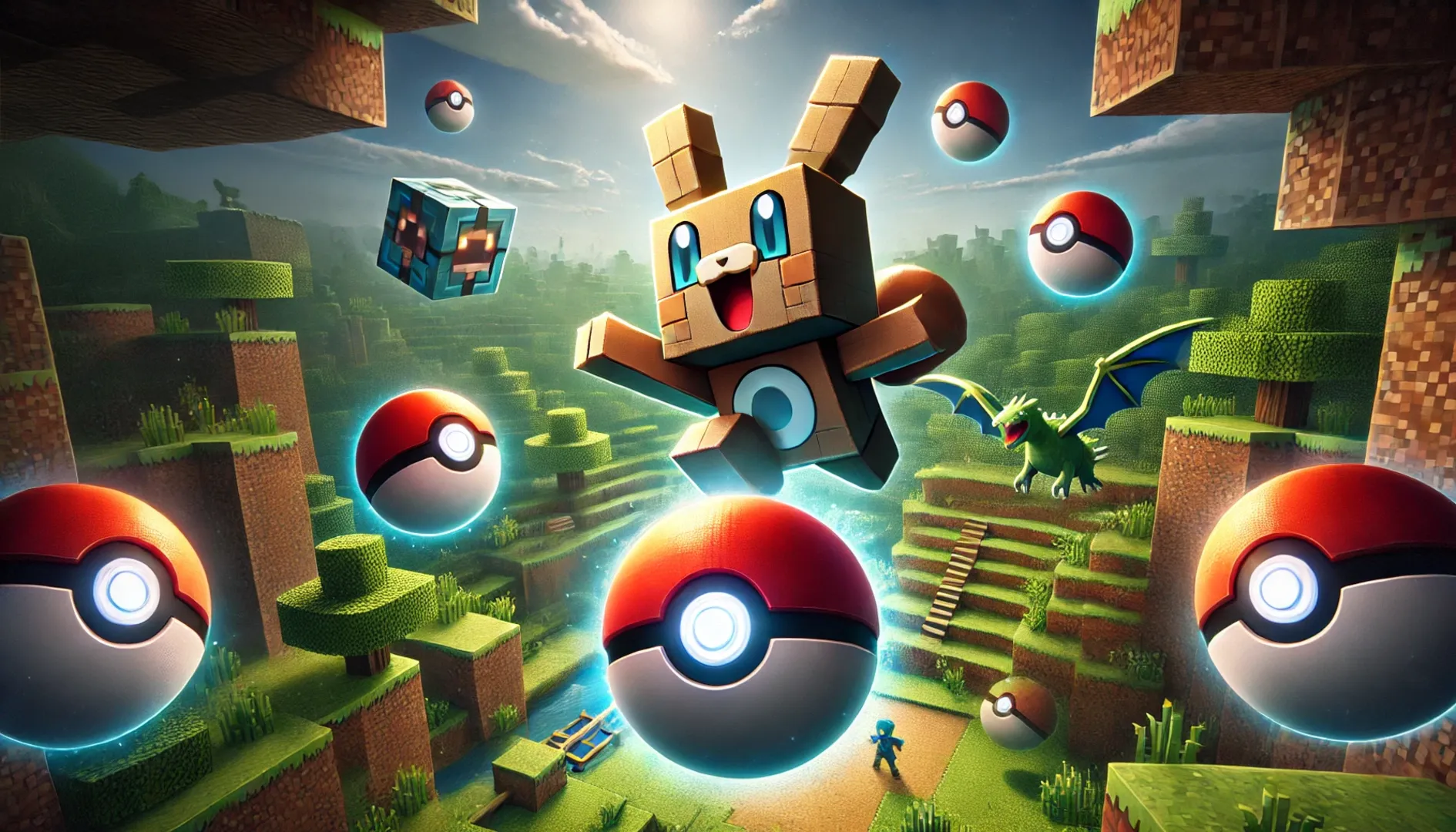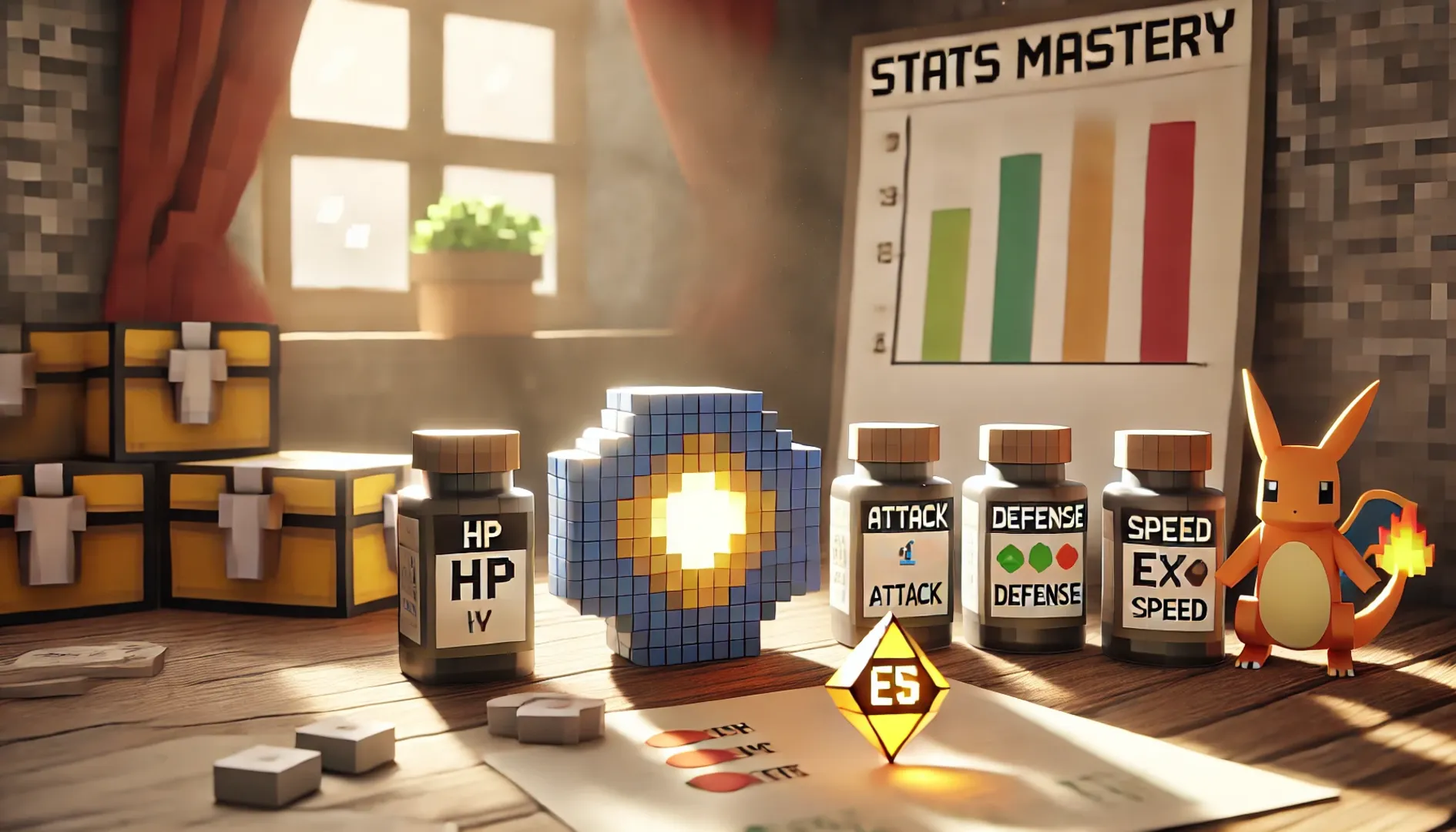Exploring different biomes in Cobblemon not only offers new scenery but also provides unique opportunities to find rare Cobblemon and valuable resources. Each biome has its own set of Cobblemon spawns, special structures, and rare items, making exploration a rewarding experience. Here’s a guide to the top seven Cobblemon biomes, what to expect in each, and tips for making the most of your adventure.
1. Forest Biome
The Forest biome is abundant with life, from early-game Cobblemon to rare spawns hidden in dense woods. Its peaceful setting and high resource availability make it a great starting point for new trainers and those looking to expand their team.
- Notable Spawns: You’ll commonly find Pidgey, Rattata, Caterpie, and occasionally rare Bug- or Grass-types like Bulbasaur and Scyther.
- Special Resources:
- Apricorn Trees: Forests are home to apricorn trees, essential for crafting different types of Poké Balls.
- Berries and Herbs: Useful for crafting potions and status cures.
- Structures: Some forest areas contain small ruins or cabins with loot chests, which may hold items like Poké Balls, berries, or even evolution stones.
2. Mountain Biome
Mountain biomes offer a challenging landscape filled with strong Rock-, Steel-, and Ground-type Cobblemon. This rugged terrain is ideal for trainers looking to capture Cobblemon with high defense and attack stats.
- Notable Spawns: Cobblemon like Geodude, Onix, and Machop are common, while rarer spawns such as Larvitar or Gible may appear higher up the slopes.
- Special Resources:
- Evolution Stones: Mining in mountains can yield Fire, Thunder, and Moon Stones.
- Minerals: Iron, coal, and rare ores are abundant, making mountains ideal for gathering resources for Poké Ball crafting.
- Structures: Some mountains contain caves with loot chests or hidden dungeons, where Cobblemon like Rhyhorn or Sableye might spawn.
3. Desert Biome
The Desert biome, with its wide-open spaces and harsh conditions, is a hotspot for Ground-, Rock-, and Fire-type Cobblemon. The unique sand-covered terrain and structures make it an interesting biome for experienced trainers.
- Notable Spawns: Sandshrew, Cubone, and Trapinch are common, while rarer finds like Larvesta or Flygon can appear in deeper desert areas.
- Special Resources:
- Fossils: Desert temples and caves often contain fossils, which can be revived into ancient Cobblemon.
- Sand and Clay: Useful for crafting and building.
- Structures: Desert temples and ruins frequently have loot chests that contain rare items like fossils, TMs, and evolution stones. Some even hold Ultra Balls, making them a worthwhile stop.
4. Swamp Biome
The Swamp biome is known for its mysterious vibe and unique Water- and Poison-type Cobblemon. It’s a fantastic biome for trainers looking for Cobblemon with defensive or special attacking abilities.
- Notable Spawns: Grimer, Koffing, Lotad, and occasionally rarer finds like Toxicroak or Gligar.
- Special Resources:
- Medicinal Herbs and Berries: Swamps are rich in herbs for potion crafting, particularly for status effects like poison and paralysis.
- Slime Balls: Dropped by wild Cobblemon, useful for certain recipes.
- Structures: Occasionally, small shacks or ancient stone structures can be found, containing loot or healing items. Some areas may also have hidden entrances to dungeons where rare Poison-types spawn.
5. Snowy Taiga Biome
The Snowy Taiga biome offers a serene, icy landscape filled with hardy Ice- and Steel-type Cobblemon. Trainers who enjoy defensive or versatile Cobblemon should explore here, as many rare types thrive in these cold conditions.
- Notable Spawns: Swinub, Snorunt, Cubchoo, and rarer Ice-types like Sneasel or Bergmite.
- Special Resources:
- Icy Rock: Useful for evolving certain Cobblemon like Eevee into Glaceon.
- Snow Blocks: Ideal for crafting items related to Ice-type moves or bases.
- Structures: Snowy forests sometimes contain ice caves or ancient ruins where you can find loot and rare Cobblemon. These ruins may also house healing items, ice-type TMs, or unique evolution stones like the Ice Stone.
6. Ocean Biome
The Ocean biome is expansive, providing an underwater world filled with Water-type Cobblemon and resources. Exploring this biome requires careful planning, but the rewards are worth it, especially for trainers building a Water-based team.
- Notable Spawns: Tentacool, Horsea, and Magikarp are common, while rarer spawns include Lapras, Dratini, and Sharpedo.
- Special Resources:
- Water Stones: Often found in deep ocean trenches, Water Stones are essential for evolving certain Cobblemon.
- Pearls and Shells: These can be found scattered on the ocean floor, providing items for trading or crafting.
- Structures: Ocean temples and underwater ruins contain valuable loot chests. Occasionally, these structures hide rare items like evolution stones, Water-type TMs, and healing potions.
7. Savanna Biome
The Savanna biome is a warm, open biome with unique Ground- and Fire-type Cobblemon. The landscape is relatively easy to navigate, making it an ideal location for finding mid-level Cobblemon and essential resources.
- Notable Spawns: Cubone, Houndour, Growlithe, and occasionally rarer spawns like Larvesta or Electrike.
- Special Resources:
- Fossils: Certain savanna rock formations may contain fossils, allowing you to revive ancient Cobblemon.
- Fire Stones: Occasionally found within boulders or as loot in structures, perfect for evolving Fire-types like Eevee into Flareon.
- Structures: Small camps and abandoned outposts sometimes contain loot chests with useful items like Fire-type TMs, Poké Balls, or even healing potions.
Tips for Exploring Biomes and Maximizing Finds
- Bring Specialty Poké Balls: Different types of Poké Balls (e.g., Dusk Balls for caves, Dive Balls for oceans) increase your capture rate based on the environment.
- Use Cobblemon with Surf or Fly: Water- and Flying-type moves make navigating oceans and mountain biomes easier, allowing you to travel faster and encounter more Cobblemon.
- Equip with EV Training Items: Some biomes are better suited for specific EV training (e.g., forests for Speed, mountains for Defense). Equip Power Items to maximize EV gains in specific stats.
- Visit During Biome-Specific Events: Some servers host events where certain biomes have boosted spawns or rare loot. Participating in these events can lead to increased rewards.
Conclusion
Each biome in Cobblemon offers unique opportunities to catch rare Cobblemon and gather valuable resources, adding depth and variety to your adventure. By exploring these top seven biomes and knowing where to find special spawns and items, you can build a strong, diverse team while enjoying all that the Cobblemon world has to offer.
Have you discovered any favorite spots for finding rare Cobblemon? Let us know in our Discord!



